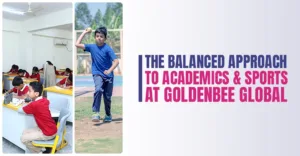
In today’s rapidly evolving world, education is not just about keeping up with the basics; it’s about preparing kids for the next generation of challenges and opportunities. One crucial step in this preparation is understanding your child’s primary learning style. By identifying how your child learns best, you can tailor their educational experiences to be more effective, enjoyable, and engaging. Let’s explore the different learning styles and how you can support your child’s growth and readiness for the future.
Understanding Learning Styles
Every child is unique, and so is their approach to learning. Generally, there are three primary learning styles: Visual, Auditory, and Kinesthetic. Recognizing which style suits your child can help you provide the right resources and activities that cater to their strengths.
1.Visual Learners
Visual learners absorb information best when it is presented in a visual format. They prefer seeing things like pictures, diagrams, charts, and written instructions. They often have a keen eye for detail and may enjoy activities like drawing, reading, and watching videos.
Signs Your Child is a Visual Learner:
- They remember information better when it’s written down.
- They enjoy looking at maps, diagrams, and pictures.
- They are good at visualizing objects, plans, and outcomes.
- They often use phrases like “I see what you mean.”
How to Support Visual Learners:
- Use visual aids like flashcards, charts, and infographics.
- Encourage them to make mind maps or diagrams to organize information.
- Provide books with plenty of illustrations and color-coded notes.
- Use educational videos and documentaries to supplement learning.
2.Auditory Learners
Auditory learners thrive when they can hear information. They learn best through listening and speaking activities. These learners often excel in discussions, lectures, and group activities where they can listen to others and share their ideas.
Signs Your Child is an Auditory Learner:
- They prefer listening to instructions rather than reading them.
- They remember details from conversations and lectures.
- They enjoy talking and discussing topics with others.
- They may use phrases like “I hear you” or “That sounds right.”
How to Support Auditory Learners:
- Encourage them to read aloud or use audiobooks.
- Engage them in discussions and encourage them to explain concepts verbally.
- Use songs, rhymes, and mnemonic devices to help them memorize information.
- Provide opportunities for group study and verbal presentations.
3.Kinesthetic Learners
Kinesthetic learners are hands-on learners who learn best through doing. They prefer engaging in physical activities and using their bodies to express themselves. These learners often enjoy experiments, building models, and other interactive activities.
Signs Your Child is a Kinesthetic Learner:
- They prefer learning by doing and experimenting.
- They have good hand-eye coordination and enjoy sports or physical activities.
- They find it difficult to sit still for long periods.
- They often use gestures and body language to communicate.
How to Support Kinesthetic Learners:
- Incorporate hands-on activities like building projects, experiments, and crafts.
- Use physical activities, such as role-playing or movement games, to reinforce learning.
- Allow them to take frequent breaks during study sessions.
- Use tools like modeling clay, building blocks, or interactive simulations.
Combining Learning Styles
While most children have a dominant learning style, it’s essential to remember that they can also benefit from a mix of styles. For example, a child may primarily be a visual learner but still benefit from hands-on experiments or listening to stories. Encouraging a multi-sensory approach to learning can enhance their overall understanding and retention of information.
Preparing for Next-Gen Challenges
As we prepare children for the future, it’s crucial to equip them with the skills and knowledge they need to thrive in a rapidly changing world. Understanding their learning style is just the beginning. Here are some additional tips to help your child adapt and excel:
- Encourage Curiosity: Foster a love of learning by encouraging your child to explore new topics and ask questions.
- Emphasize Critical Thinking: Help your child develop problem-solving skills by engaging them in activities that require analysis and reasoning.
- Promote Digital Literacy: Familiarize your child with technology and digital tools, as these are essential skills for the future.
- Cultivate Creativity: Encourage creative expression through art, music, storytelling, and other creative outlets.
- Support Emotional Intelligence: Teach your child to understand and manage their emotions, communicate effectively, and build healthy relationships.
Identifying your child’s primary learning style is a powerful tool in helping them reach their full potential. By providing tailored educational experiences, you can make learning more enjoyable and effective. As we look to the future, preparing kids for next-gen updates involves not only understanding how they learn best but also equipping them with a broad range of skills and knowledge. Let’s support our children in becoming confident, capable, and curious learners, ready to embrace the challenges and opportunities of tomorrow.
Blog crafted by Monika Boopathy, Content Developer,
Rankyouhigher, Coimbatore.














